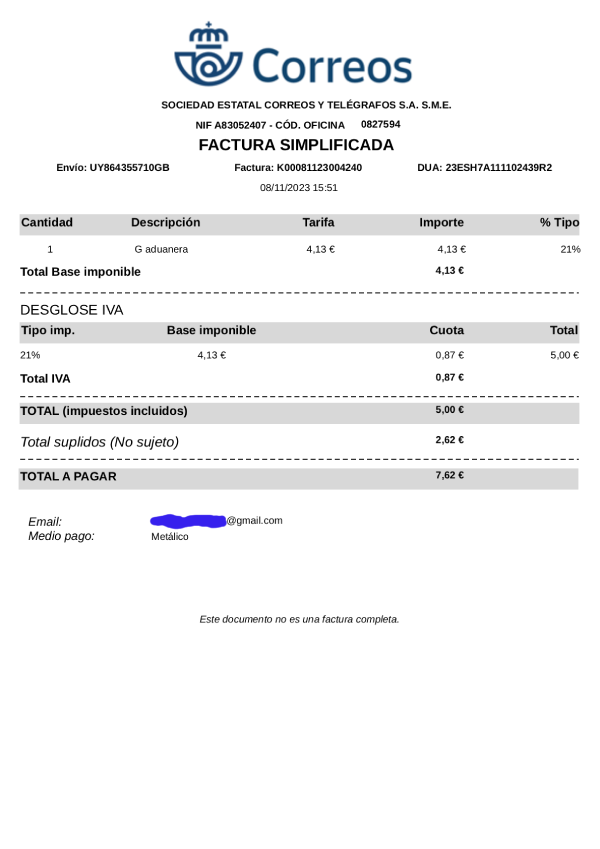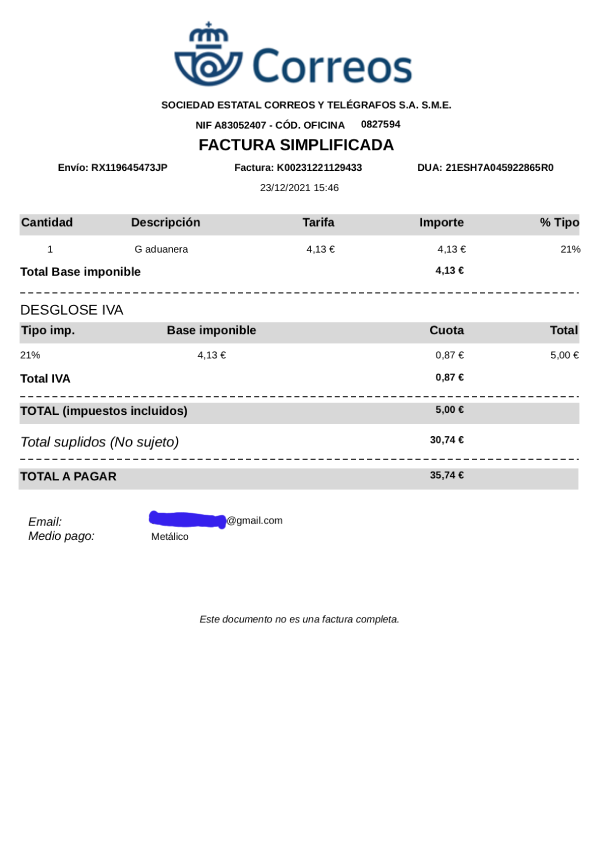Receiving packages in the EU from outside the EU
Customs fees, taxes, and time delays are so frustrating when receiving something from outside the EU.
It’s something to consider if you have a POD with European customers.
This is from a customer perspective, of someone who lives in Spain, which is an EU country.
So, when I started looking into POD, I did research to try to make the printing as close to the customers source as possible while maintaining a reasonable price and good quality. This was amplified by the tariffs implemented by the US, and the counter-tariffs by other countries to US-produced goods.
The theory is also that something created within the country or region would take less time to be received by the customer.
As a POD business, you don’t want any complaints from your customers, of course you want them to have an excellent experience every time. So it makes sense to print and ship from close by.
Customs taxes and fees from outside EU
All EU countries have taxes on goods arriving from outside the EU. These differ between countries, for example Hungary has a 27% VAT, Spain 21%.
There are no additional taxes on goods arriving from within the EU.
What do I get charged?
I can only give my first-hand experience in Spain where the breakdown is typically:
G aduanera: This is the gestión aduanera (customs handling fee) charged by Correos for processing the import paperwork. A small package is typically 4-5 euros.
IVA (21%): This is the value-added tax applied to the handling fee (21% standard Spanish VAT rate).
Subtotal (impuestos incluidos): This is the handling fee plus its VAT.
Suplidos: This is the IVA paid on the actual item + shipping + any other clerical fees that may have accrued.
Total a pagar: The total amount you have to pay to receive your package.
The extra costs add up quickly. This means a €15 item could end up costing another €8 – €10.
- All
- Examples of customs payments

The August 2025 package was for a single mug.

I can't remember what this was for sorry but I thought I should show another example.
What kinds of delays are there?
I can only speak from my own experience but I’ve had months delays as a package from Australia take months to work its way through the system.
Will I get charged?
Maybe.
Ordering from outside the EU is a game of chance – sometimes your package sails through with no issues, and other times it gets stuck in customs, costing you extra money and delays.
In Spain, the rules are clear on paper but inconsistent in practice.
Any package coming in from outside the EU can be subject to both VAT (IVA) and a customs handling fee.
The handling fee is charged by Correos or the courier for processing the customs paperwork, and then VAT is applied to the value of the goods (and often the shipping, too).
What makes it especially frustrating is that it’s impossible to predict whether your order will be flagged for inspection. Two identical items, ordered on the same day from the same seller, can have completely different fates – one might be delivered straight to your door, while the other sits in a customs warehouse until you pay up.
It used to be that you had to have the exact change on hand at home but thankfully the most recent time they had a card payment machine. Oh! Also I remember that they used to only take cash for the customs payment, even at the post office – although they were able to make change there. Hopefully that has also been updated.
Do I need a NIE?
There are some stories of people needing their NIE registered with AEAT and I know when I first arrived I had some problems receiving a package.
Bottom line
Receiving a package from outside an EU country when you’re in an EU country is tricky.
Delays are another part of the headache. If the package is held, the receiver might need to submit paperwork, pay online, or go in person, depending on the courier and the type of goods. What could have been a five-day delivery can stretch into two weeks or more.
When organising POD, sending from within the EU is ideal. It doesn’t guarantee fast delivery but it definitely bypasses this bureaucratic headache and a poor experience for your customer.
For shoppers who buy regularly from outside the EU, it’s a constant gamble. Some choose to stick to EU-based sellers to avoid the uncertainty, but for unique items or better prices, ordering internationally is still tempting. Unfortunately, until customs processes become more consistent and transparent, ordering from outside the EU will remain a bit of a crap shoot — one that costs both time and money.



